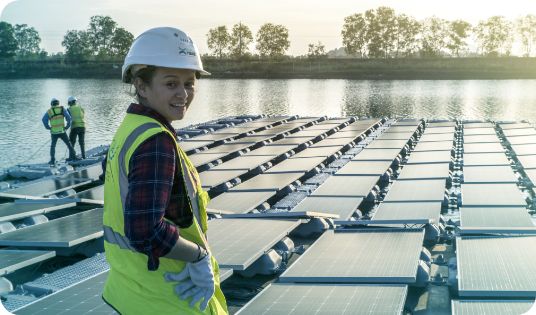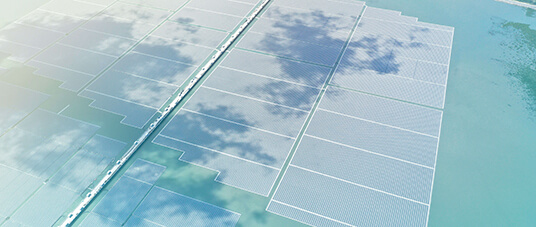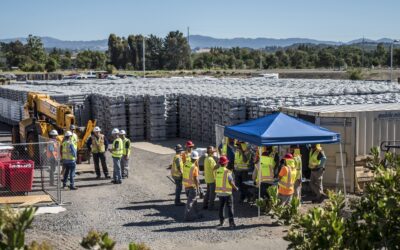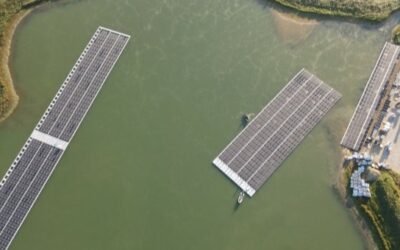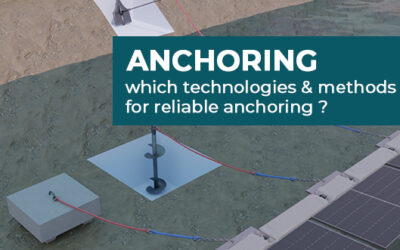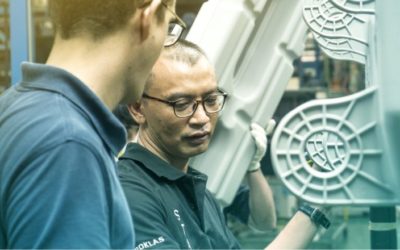Ciel & Terre Japan recently took up the challenge of transforming an unused primary school swimming pool into a floating solar project. Find out more about this unique project in this article!
Floating solar power: a response to the lack of space and the rehabilitation of unused areas
Floating solar power: the 3rd pillar of solar energy
In Japan, Ciel & Terre installed something quite unusual: a floating solar plant on a former swimming pool. Considering global warming, cities and governments seek for renewable energy solutions. As a matter of fact, they enable to reduce their green gas emissions while answering the increase of electrical needs. Floating Solar is actually now considered as the third pillar of solar industry because it can fit a large number of possible applications. In fact almost limitless.
A wide variety of applications for floating solar power
Irrigation reservoirs, hydroelectric dams, water treatment surfaces or drinking water sites, quarry lakes, etc. They are good examples of FPV applications to take advantage of the synergy between the sun and the water. This wide variety of sites makes floating solar a great solution to spread renewable energy and to meet energy needs. Since the very beginning of its floating solar history, we, Ciel & Terre, have the main objective to provide solutions preserving lands. We support institutions, governments, and pond owners to maintain their activities requiring lands: agriculture, city growth, industrial activities etc. Accordingly to our beliefs, we are engaged to convert unused areas into a green energy field.
Japanese Elementary School Swimming Pool turned into solar energy thanks to floating solar!
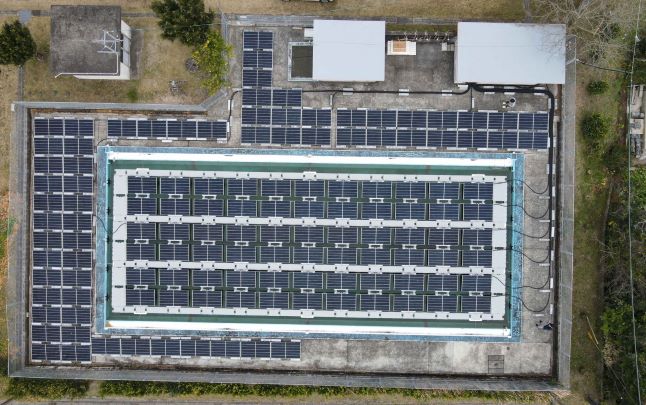
Our team at Ciel & Terre Japan has recently taken up this challenge. That of transforming unused elementary school swimming pools into floating solar projects in response to the request of its business owner!
Unused swimming pools all over Japan
In Japan, as a result of the reviewing of the division of municipalities and their consolidations over several decades, some schools are not used anymore. Even for running schools, students no longer use the existing outside pools due to their deterioration and they now go to indoor pools. The challenging part in school renovation is to find a new usage for the pools and their facilities. Indeed the cost of dismantling is expensive for the cities. So when there is an unused pool and no plan to remove the building in the long term, the water surface becomes highly suitable for floating solar installations.
The first solar project floating on a swimming pool by Ciel & Terre Japan
The aim of turning pools into energy producer is to contribute to the Community by using existing local assets and facilities. Japanese cities were looking for a good way to reuse these pool. ELM, a local developer and EPC, came with the disruptive idea to turn them into floating solar plant.
To launch Ciel & Terre Japan’s 1st project at Hirakawa Elementary School (Satsuma, Kagoshima, Japan) it was essential to gain local people’s understanding and support. This project is the first of his kind. It was the first time that a part of an educational facility was used as a power plant. This project turned into reality thanks to ELM hard negotiation and adjustment work.
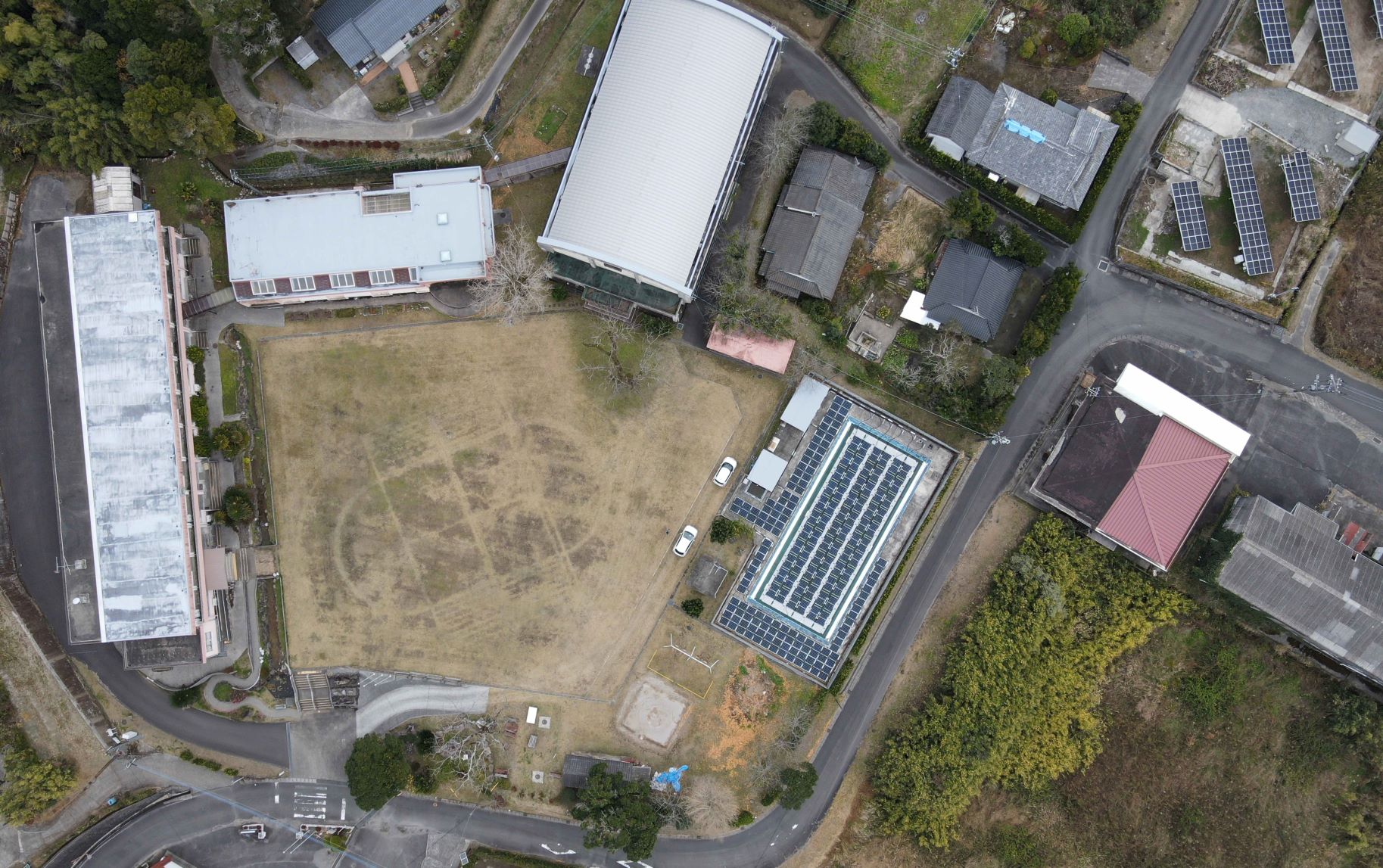
Contributing to the Community is a strong mindset shared by locals, ELM and Ciel & Terre Japan. Water surfaces being a local people’s concerns, Ciel & Terre Japan naturally joined the project with its Hydrelio® technology and strong expertise in FPV.
The advantages of installing floating solar on a pool is that we can reuse existing pool facilities. Such as fences around the pool and the changing room for PCS storage area. Also, no need to excavate the land due to concrete pool side.
Saori McMahon, Sales developer and project manager, Ciel & Terre Japan
For Ciel & Terre Japan, the key challenge for those small FPV plants is to minimize the system and transport costs. So far, these micro-businesses only concern elementary and junior schools. In this respect, it has been estimated that approximately 6,000 schools may be eligible for FPV in the country. We will do our best to support customers who contribute to the community in small businesses like ELM.
[1] FPV : Floating Photovoltaic
Par Chloe, marketing & saori and Kenta, Sales managers
